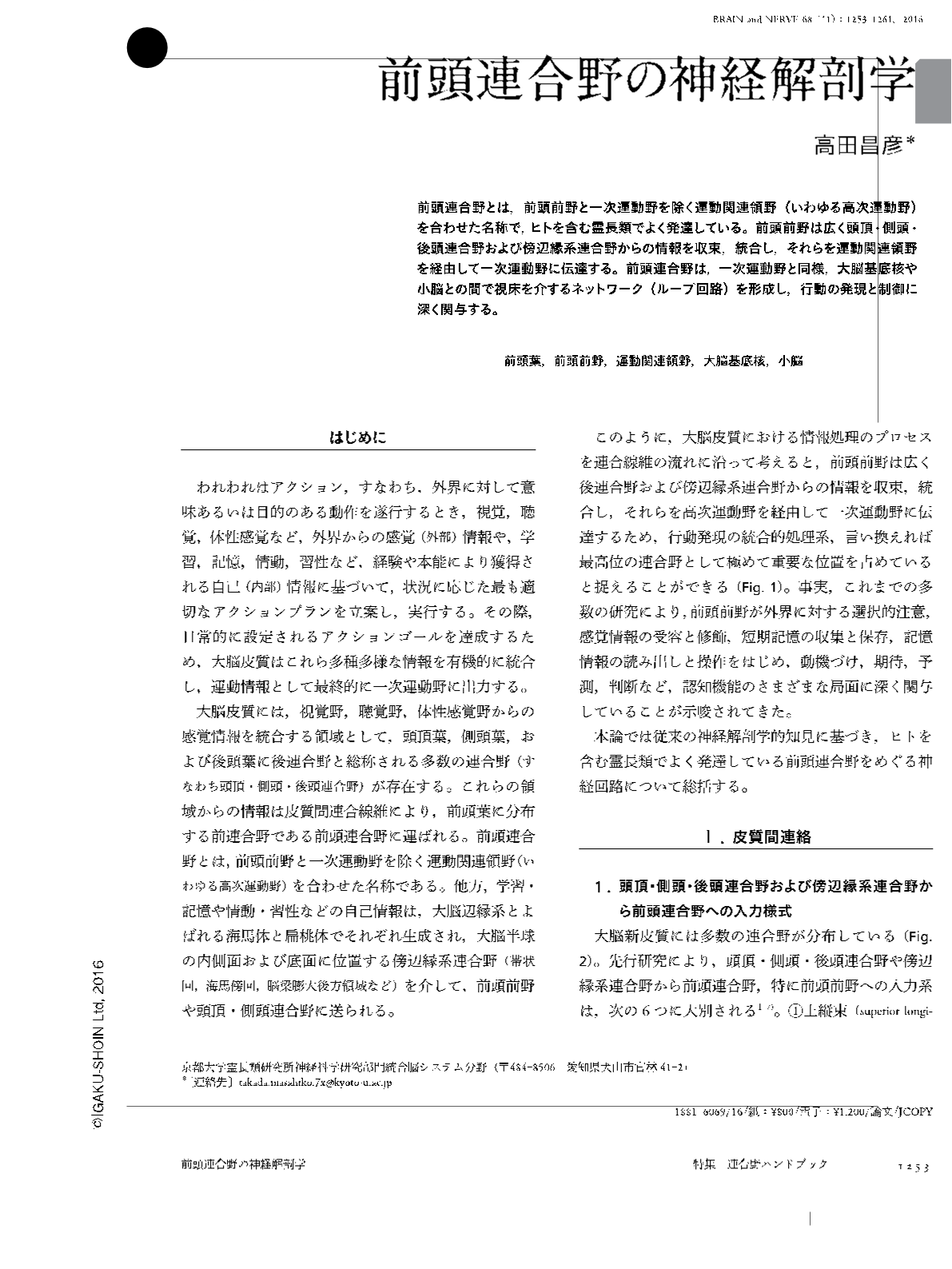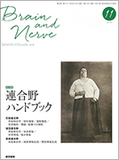Japanese
English
- 有料閲覧
- Abstract 文献概要
- 1ページ目 Look Inside
- 参考文献 Reference
前頭連合野とは,前頭前野と一次運動野を除く運動関連領野(いわゆる高次運動野)を合わせた名称で,ヒトを含む霊長類でよく発達している。前頭前野は広く頭頂・側頭・後頭連合野および傍辺縁系連合野からの情報を収束,統合し,それらを運動関連領野を経由して一次運動野に伝達する。前頭連合野は,一次運動野と同様,大脳基底核や小脳との間で視床を介するネットワーク(ループ回路)を形成し,行動の発現と制御に深く関与する。
Abstract
The frontal association cortex is composed of the prefrontal cortex and the motor-related areas except the primary motor cortex (i.e., the so-called higher motor areas), and is well-developed in primates, including humans. The prefrontal cortex receives and integrates large bits of diverse information from the parietal, temporal, and occipital association cortical areas (termed the posterior association cortex), and paralimbic association cortical areas. This information is then transmitted to the primary motor cortex via multiple motor-related areas. Given these facts, it is likely that the prefrontal cortex exerts executive functions for behavioral control. The functional input pathways from the posterior and paralimbic association cortical areas to the prefrontal cortex are classified primarily into six groups. Cognitive signals derived from the prefrontal cortex are conveyed to the rostral motor-related areas to transform them into motor signals, which finally enter the primary motor cortex via the caudal motor-related areas. Furthermore, it has been shown that, similar to the primary motor cortex, areas of the frontal association cortex form individual networks (known as “loop circuits”) with the basal ganglia and cerebellum via the thalamus, and hence are extensively involved in the expression and control of behavioral actions.

Copyright © 2016, Igaku-Shoin Ltd. All rights reserved.


